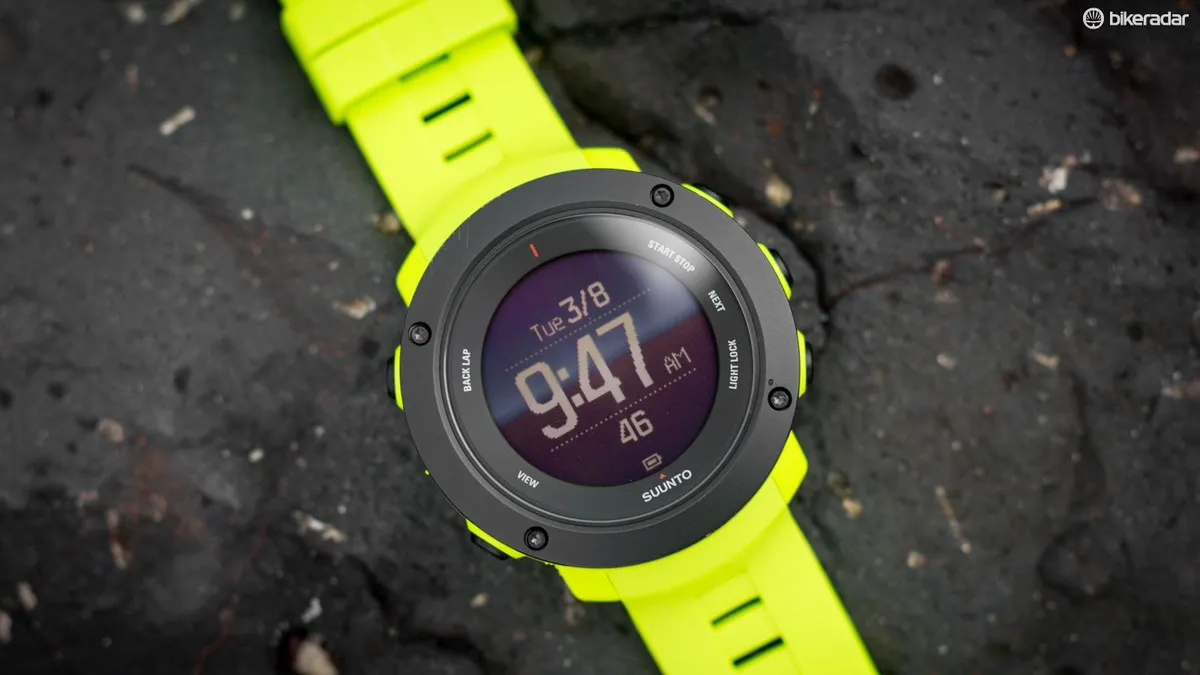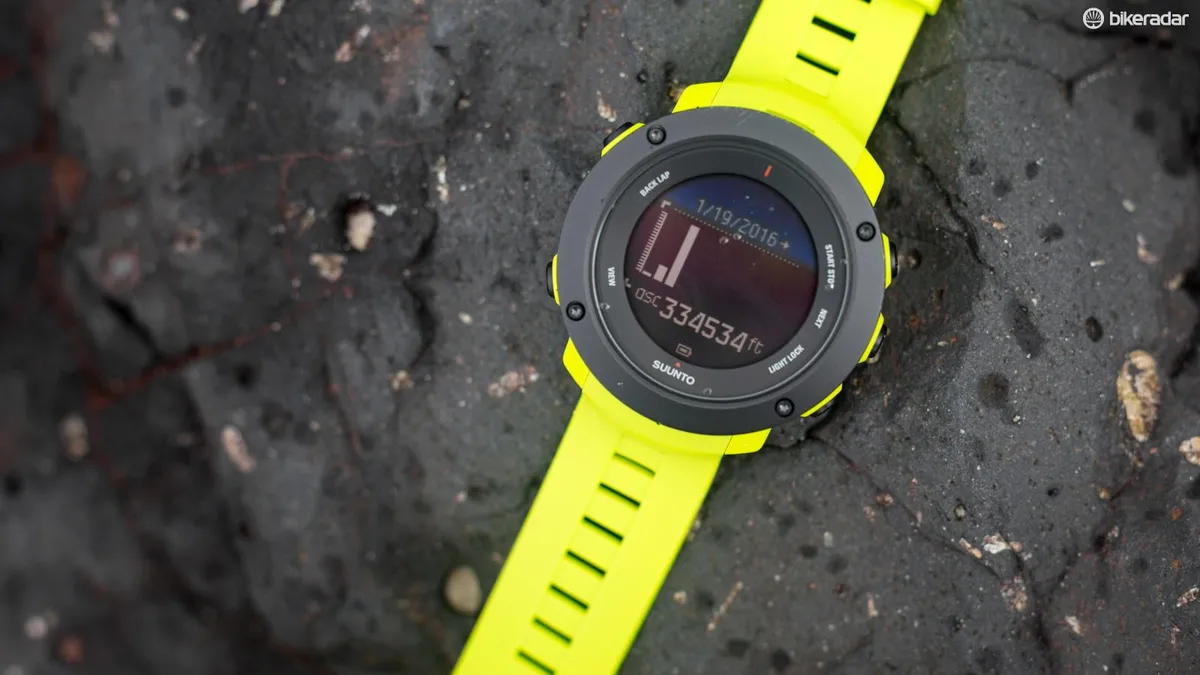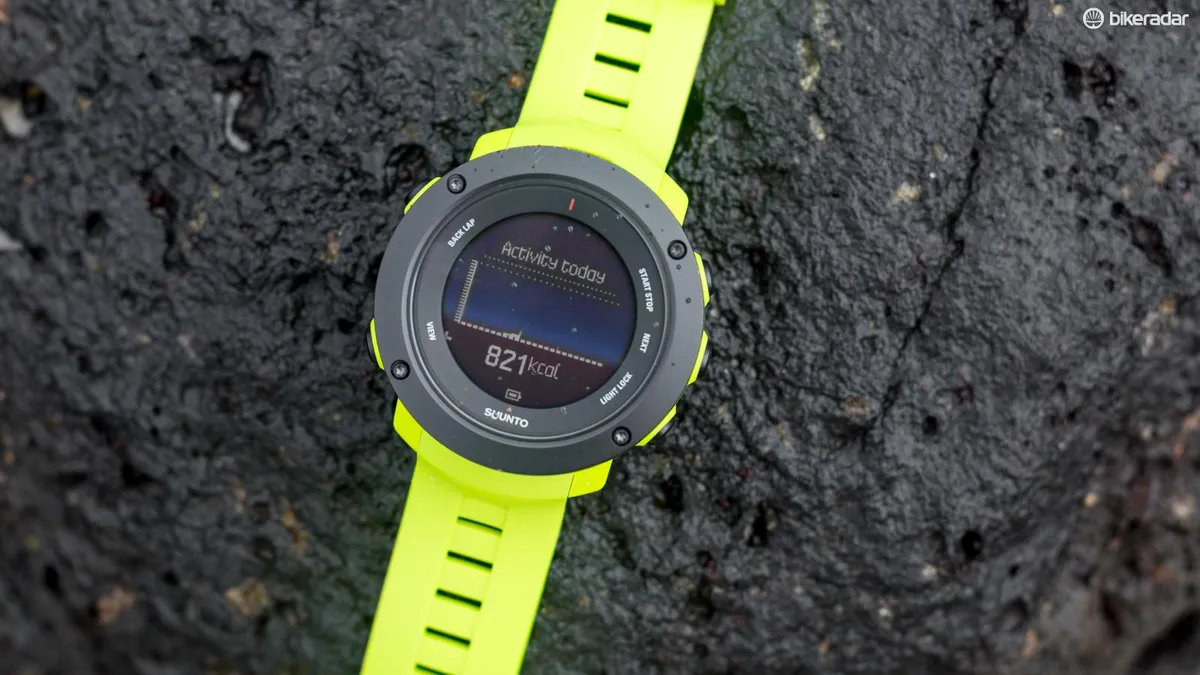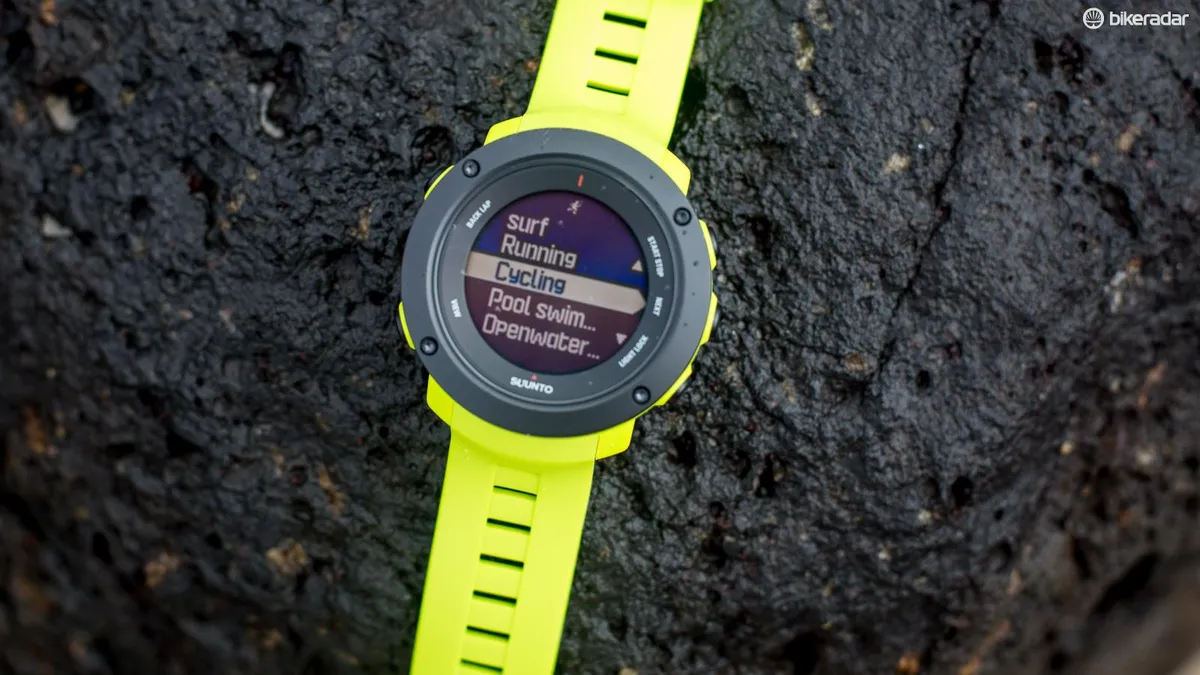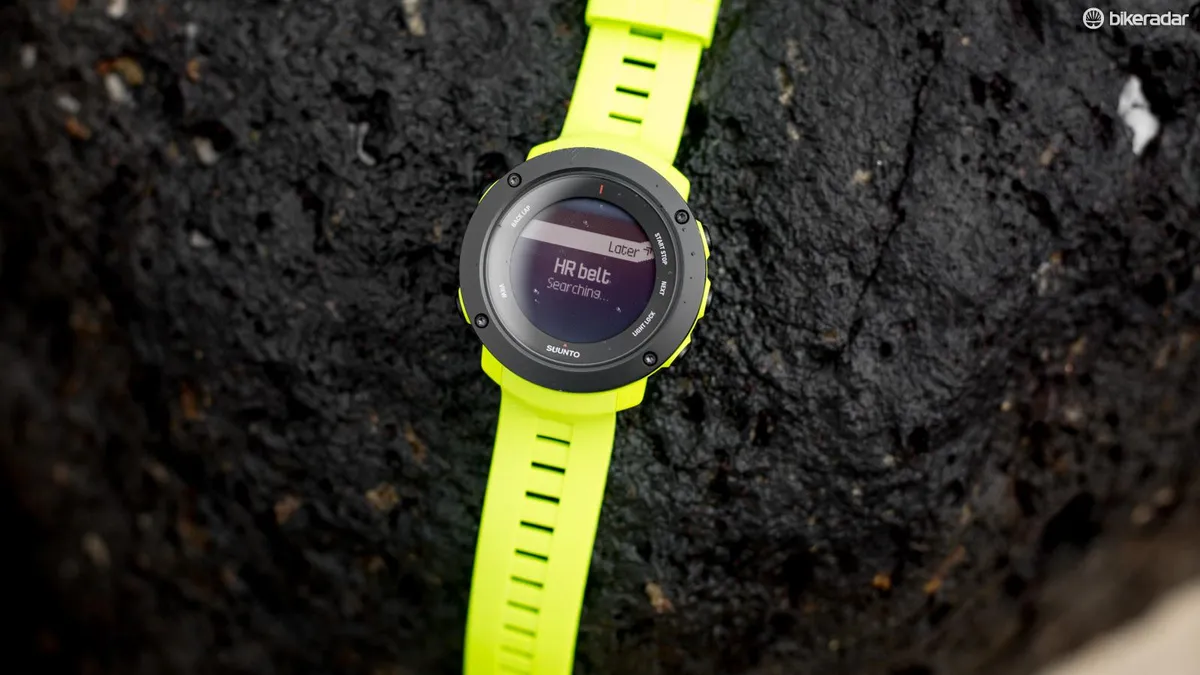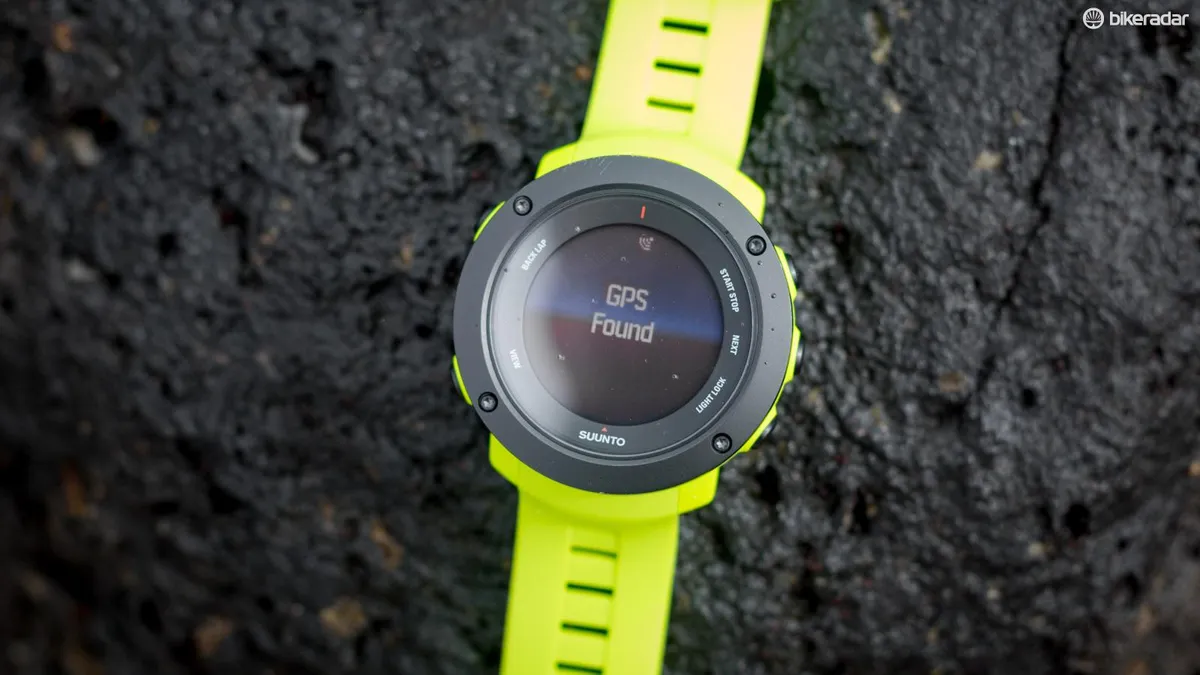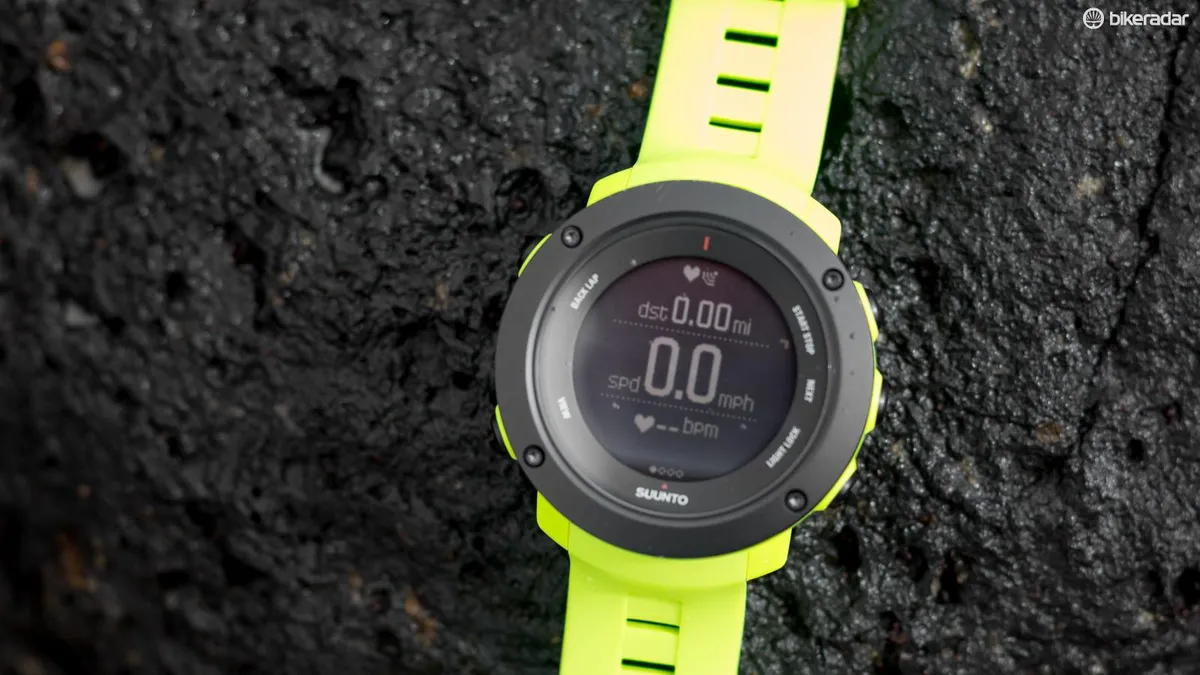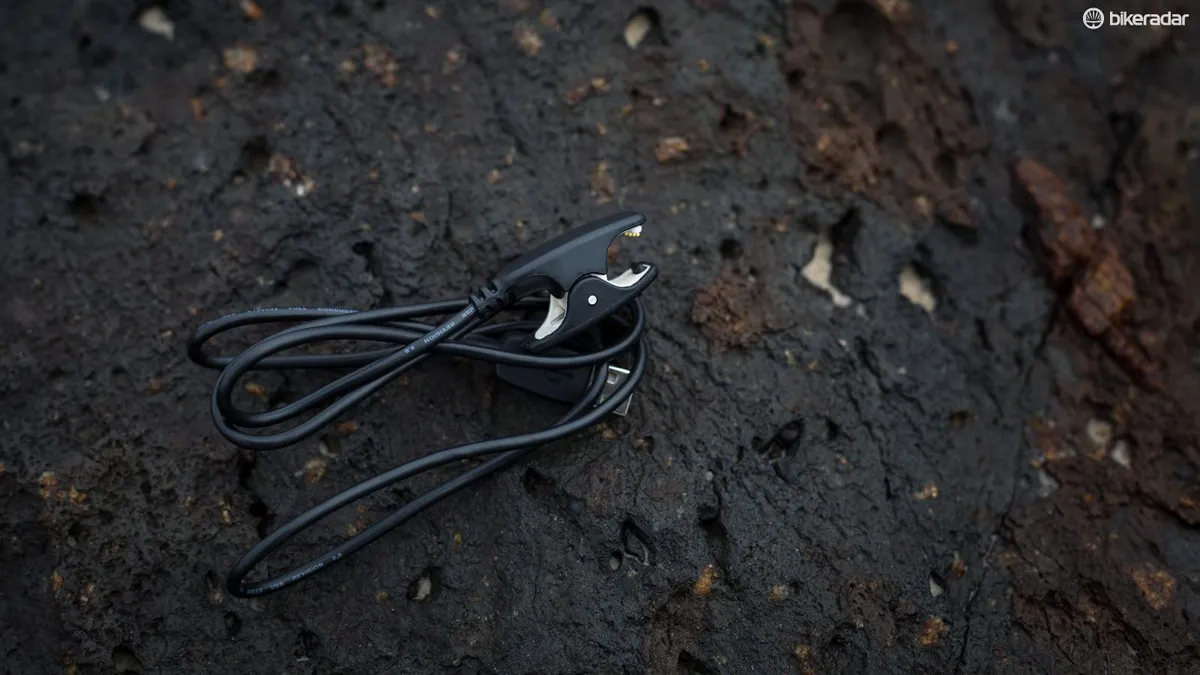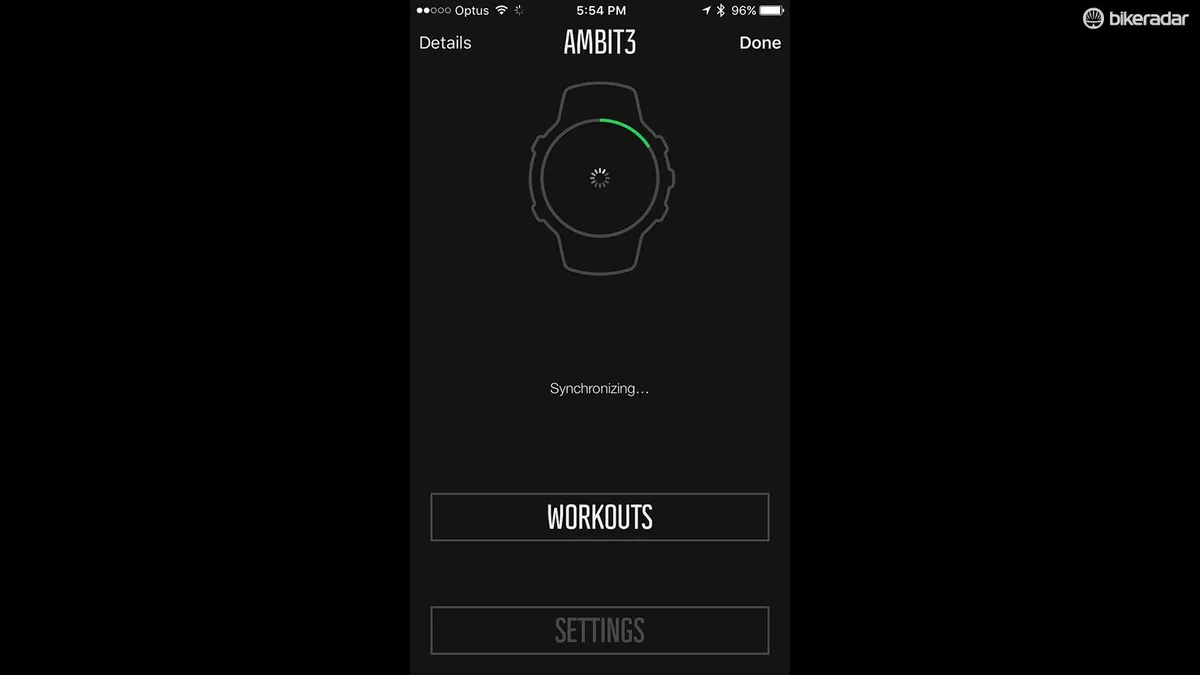The latest edition to Suunto’s Ambit3 family is the Vertical. This stylish GPS-enabled watch is built tough to follow your adventures whether they be by bike, run or hike. Sitting in the middle of Suunto’s sport watch range, the Ambit3 Vertical is designed to guide those who love climbing and who are truly into the pain cave.
With a newly redesigned GPS antenna hidden in the bezel the unit sheds the bulbous design around the band that is found on other Ambit watches. The Ambit3 Vertical is great looking, too, and slightly smaller and lighter (74g) than the Garmin Fenix 3 (84g), though I’m not totally sold on the lime colour — it is also available in white, blue and black.
The silicone rubber strap is one of the more comfortable I’ve worn, and is super pliable with a slippery finish that doesn’t pull out arm hairs.
You don’t get a colour screen, but to be honest on a GPS watch it’s not a feature that’s really missed. The LED backlit screen is pretty small, however, at 128x128 pixels, but the black and white screen is tack sharp and easy to read in all light conditions.
With some watches in this category now moving to touchscreen, the Ambit3 Vertical has opted for five buttons around the bezel instead, so you can keep your gloves on to change screens or start/stop and activity.
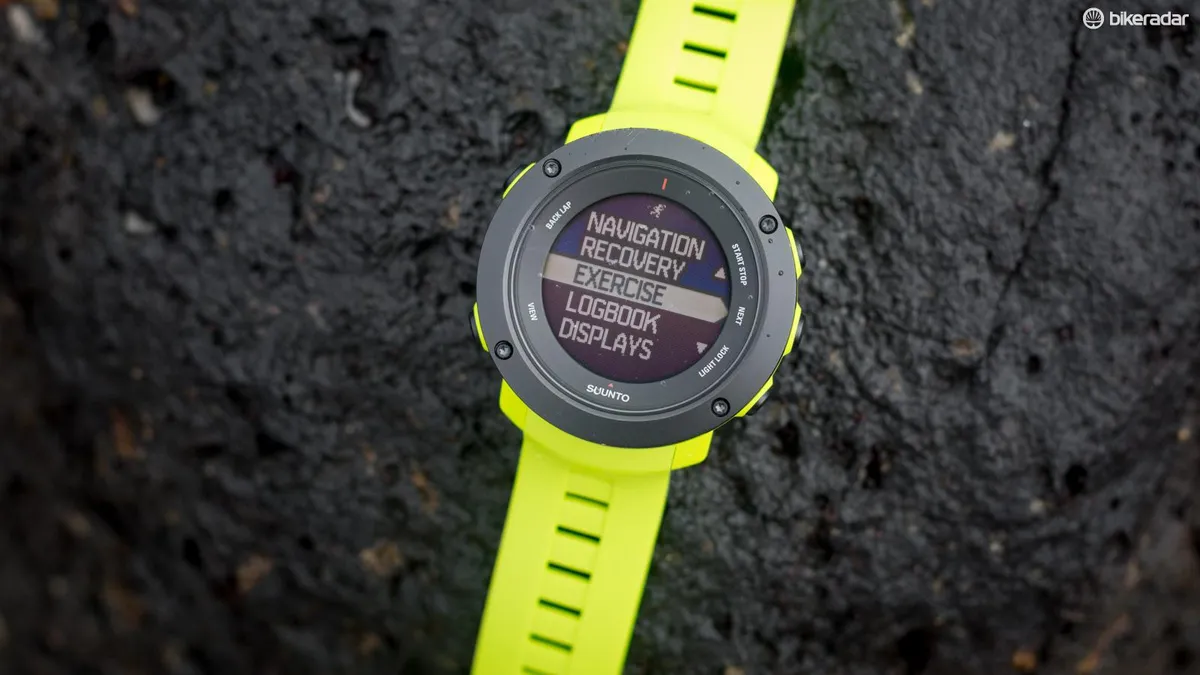
Suunto Ambit3 Vertical functionality
Being someone who’s used to the Garmin user interface, I really struggled to figure out the button arrangement, as well as some of the functions. For example, to access the activities menu you press the start/stop button, and then to move to the next menu in the hierarchy you press the next button (with the start/stop button now acting as the up arrow for the menu).
For some who are reading this it may seem like a silly gripe, but throughout the testing period this was a continual frustration and I never got it right.
The watch comes with modes for cycling, mountain biking, and generic heart-rate-based indoor training as well as other modes like Ski Touring and Triathlon. These modes can be customised through the Movescount app and new ones can also be created. There’s even the option to switch between sports mid-activity, for those who are so inclined.
Battery life is spot on at the claimed 15-hours with five second GPS accuracy, and as close as we can tell about the 100-hours claim with GPS reporting backed off to one minute is also correct. The Vertical can also access the Russian GLONASS network for pinpoint GPS accuracy.
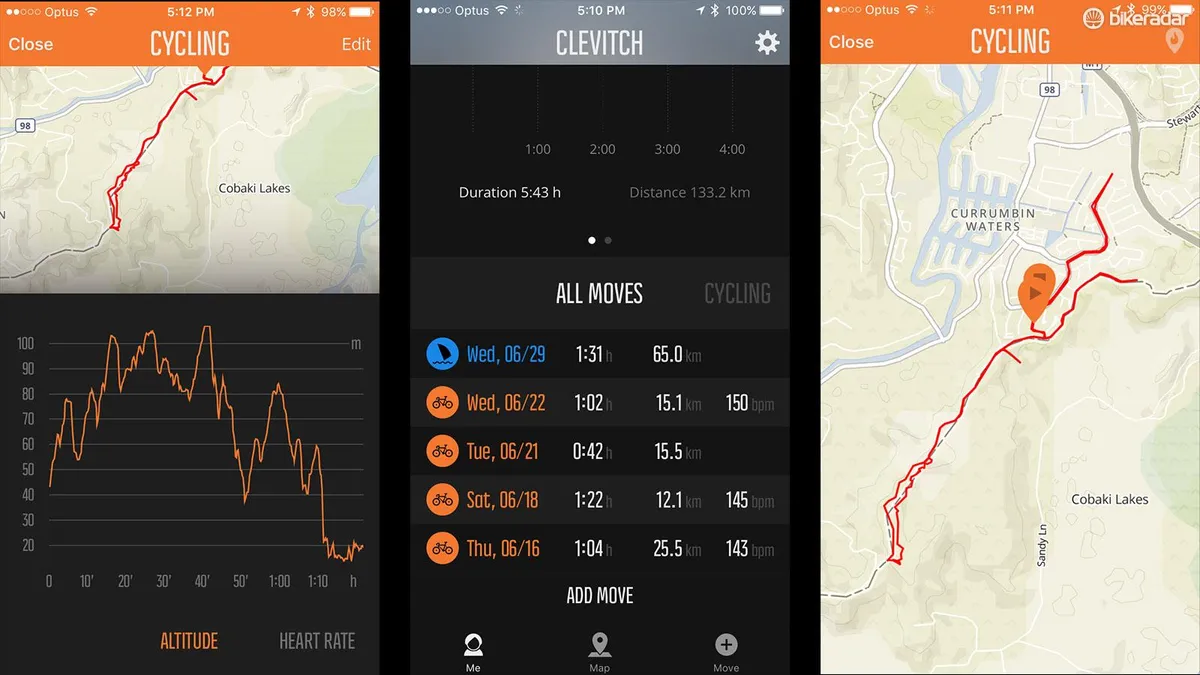
Bluetooth
The watch is Bluetooth enabled and can be paired with Bluetooth heart rate sensors and power meters as well as iOS and Android devices. Suunto also sent over its Smart Sensor heart rate strap, which was pretty comfortable and the battery pod is one of the smallest we’ve seen — it’s waterproof too.
However, getting the watch to connect to your phone in the first place takes some time and actually syncing activities took a very long time, and quite often failed — it also weighs heavily on the battery. It was so bad that I actually used the cable to bulk upload activities.
Scrolling through the watch's home screens you can view daily, seven-day and 30-day ascent totals as well as total time climbing
Once you do get it connected, however, activities are uploaded instantly via Suunto’s training software, Movescount, and unlike some brand-specific training software, Movescount plays nice with third party applications like Strava — even allowing rides to be simultaneously synced.
Working in a similar fashion to Strava and Garmin Connect, the app is streamlined and simple to use. The dashboard shows you a summary of your activity over the past month, as well as a list of all your recorded ‘Moves’, which are divided up by activity type.
The Bluetooth connection also allows the Ambit3 Vertical to display on screen notifications from your phone, and vibrate too, though we promptly turned these off once the watch began to show us notifications from Instagram and Twitter.
It's about the altitude
The focus of the Ambit3 Vertical is altitude. Scrolling through the watch's home screens you can view daily, seven-day and 30-day ascent totals as well as total time climbing. This is a somewhat trivial record, but it’s when you enter an activity that this watch’s true purpose comes to life.
During a ride, the watch shows a real-time elevation profile of where you’ve been. For pre-loaded routes, the Vertical actually displays an elevation profile of the entire route and tracks your progress with a progressive slider.
This is a particularly useful feature during a race or sportive. If you load the route into the watch beforehand you can see exactly where you are in the elevation profile.
To generate an accurate altitude reading the Vertical uses what Suunto calls FusedAlti. Basically the watch compares GPS-based altitude to what the built-in barometric altimeter is saying for ultimate accuracy. This also helps the watch produce an accurate reading when satellite coverage temporarily drops out.
Barometric altimeters can significantly drift and be tricked by things like being submerged in water, so the FusedAlti is important for an accurate altitude reading. Overall, we found the FusedAlti function provided accurate altitude readings, though when we didn't use this function the watch did seem to overcompensate by adding additional ascent to the activity.
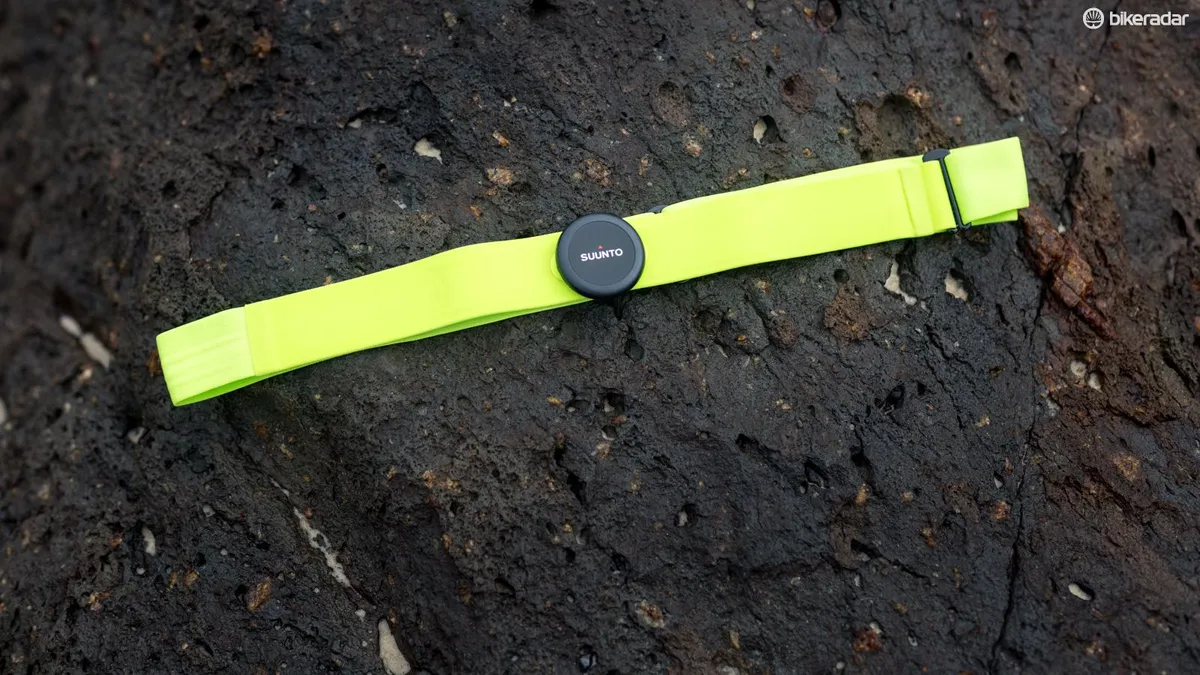
Other features
There’s also a built in thermometer, but as history has shown they’re heavily influenced by body heat. When the watch was worn directly on my wrist the temp reading was about 15 ° F/9 °C high, but on top of an arm warmer matched my Edge 500.
GPS accuracy for riding is good, though on mountain bike rides with a lower average speed I did notice small differences in total distance with the Suunto displaying adding a bit extra, albeit less than half a mile/1km. On the road where our speed was consistently higher, we had no such problem.
Once your activity is finished the Movescount app allows you to make Suunto Movies
The Vertical locates satellites extremely fast, and from outside my house was consistently quicker than a Fenix 3, Edge 500, and Briton Ryder 310 by a handful of seconds.
The watch also offers breadcrumb-style navigation, which is pretty accurate, though as it’s on your wrist isn’t the most practical for finding your way through an unfamiliar locale. That said, the Vertical can keep track of up to 250 points of interest (POI), and as you approach a POI the watch will vibrate. It's a bit of an undertaking, but you can set a POI at every corner as you're building a route in Movescount and the watch will vibrate to let you know you're getting close.
Once your activity is finished the Movescount app allows you to make Suunto Movies. These short clips show your route on a topographical map, highlighting things like peak heart rate, fastest kilometre and peak altitude. You can also add in any photos you take along the way and overlay them with real-time speed and distance.
SuuntoMovie
Overall ride impression
Overall, the Ambit3 Vertical is a fantastic choice for those who prefer a watch over a head-unit. The live elevation profile is an amazing tool and something we’d like to see across more computers and watches. Beyond the colour, the Ambit3 Vertical is great looking and has the ability to track any metric you want, including power.
Unfortunately, the clunky user-interface and slow and spotty Bluetooth syncing do knock the watch down a few pegs. The same goes for the ‘free distance’ added on to the end of a few rides, though neither of which are deal breakers.
And then there’s the price, starting at US$469 / £325 / AU$629 the Suunto isn’t cheap, but neither are any of its competitors. Considering the price and what's on offer we'd happily use the Ambit3 Vertical as our everyday watch and GPS unit, but maybe in black.

